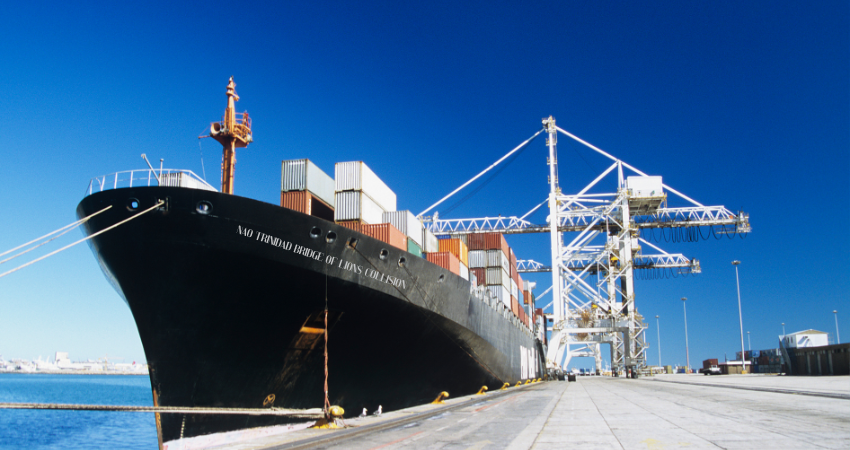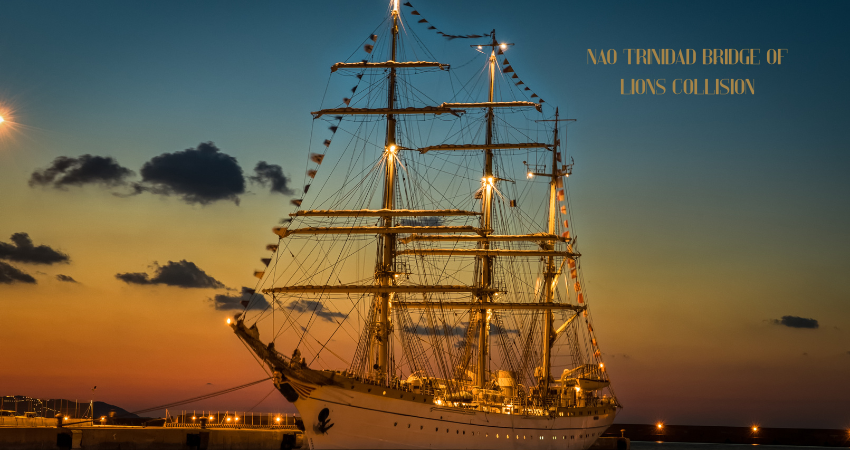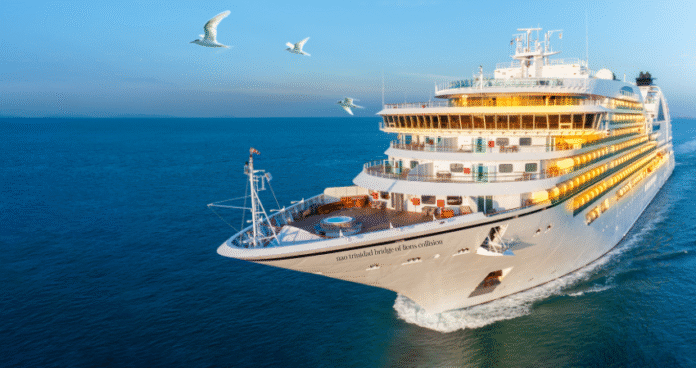Imagine sailing through the heart of nao trinidad bridge of lions collision, aboard a replica of a legendary 16th-century Spanish ship—only to miscalculate a turn and collide with the iconic Bridge of Lions. Sounds dramatic? It really happened. The collision between the Nao Trinidad and the Bridge of Lions caught national attention, not just because of the historical weight of the ship but also because it happened at one of Florida’s most treasured landmarks.
In this comprehensive guide, we’ll dig deep into what makes the Nao Trinidad special, explore why the Bridge of Lions is so beloved, unpack exactly what happened on that fateful day, and uncover the lessons maritime crews and cities can learn from this unexpected collision. Ready to set sail? Let’s go.
Understanding the Nao Trinidad
History and Heritage
The nao trinidad bridge of lions collision isn’t just another sailing vessel—it’s a floating piece of history. Modeled after the flagship of Ferdinand Magellan’s historic circumnavigation of the globe in the early 1500s, the Nao Trinidad is a meticulously crafted replica that travels around the world as a living museum.
Magellan’s original Trinidad played a vital role in the first successful voyage to circle the globe, symbolizing the courage and curiosity that fueled the Age of Exploration. Today’s replica keeps that spirit alive, inviting visitors to walk its decks, peer into the captain’s cabin, and imagine life on the open sea centuries ago.
This connection to exploration and maritime heritage makes the ship more than just wood and sails—it’s a cultural ambassador, reminding us of an era when the world felt vast and mysterious. Every detail of the ship, from its towering masts to its hand-hewn timbers, speaks to centuries-old craftsmanship.
Specifications and Design
Built to reflect 16th-century shipbuilding techniques, the Nao Trinidad stretches around 93 feet in length and boasts three towering masts. Its robust wooden hull is crafted from pine and oak, chosen for durability and historical accuracy. The design includes square sails, a raised aft deck, and a pronounced bow—all features that made ships like the Trinidad suitable for long ocean voyages.
Despite its historical look, the modern Trinidad is fitted with hidden safety measures and engines for maneuvering in busy ports. Yet these modern additions don’t take away from its authentic appearance, which draws crowds wherever it docks. Walking its deck is like stepping back in time—a floating classroom that brings maritime history to life for thousands of visitors each year.
Role as a Floating Museum
The Nao Trinidad doesn’t just sit in a harbor—it sails from city to city, opening its decks to curious minds of all ages. Onboard, visitors can explore exhibits about Magellan’s voyage, watch live demonstrations of rope-making and navigation, and even chat with crew members who live on the ship during tours.
This role as a floating museum is what brought the Nao Trinidad to St. Augustine in the first place. Its mission isn’t just to look impressive; it’s to educate and inspire. The collision at the Bridge of Lions interrupted this mission temporarily but also brought even greater attention to the ship and the stories it tells.

The Bridge of Lions: An Iconic Landmark
Historical Significance
The Bridge of Lions isn’t just a practical way to cross the Matanzas River—it’s a historic treasure that embodies St. Augustine’s charm. Opened in 1927, the bridge quickly became a beloved symbol of the city, connecting downtown St. Augustine with Anastasia Island.
Named for the two marble lion statues that guard its entrance—gifted to the city to reflect its Spanish heritage—the bridge has stood as a gateway between old and new, reminding residents and visitors alike of St. Augustine’s unique blend of colonial history and coastal beauty.
Architectural Design and Function
The Bridge of Lions features a classic Mediterranean Revival design, with elegant arches and ornate light fixtures that make it feel more like a work of art than a piece of infrastructure. But it’s also highly functional: as a bascule bridge, it can lift its center span to let taller boats pass underneath.
This blend of beauty and utility has helped the bridge earn a place on the National Register of Historic Places. Its drawbridge function is especially critical for maritime traffic, which includes both modern yachts and historic ships like the Nao Trinidad. But this very feature—combined with tides, wind, and narrow passages—also contributed to the collision.
Importance to St. Augustine
To locals, the Bridge of Lions isn’t just concrete and steel—it’s part of daily life. Tourists flock to it for sunset views, photographers capture its silhouette against the city skyline, and residents cross it on their way to work or the beach.
Events like the collision don’t just cause structural concerns; they resonate emotionally. When the Nao Trinidad collided with the bridge, it wasn’t just a maritime mishap—it felt like a piece of living history bumping against another, reminding everyone of how closely the past and present intersect in St. Augustine.
The Collision: What Happened?
Timeline of Events
On a calm afternoon, as the Nao Trinidad attempted to pass through the open span of the Bridge of Lions, something went wrong. Eyewitnesses described seeing the ship drifting slightly off course as it approached. Despite attempts to adjust, the bow scraped against the bridge’s fender system—a structure designed to protect the bridge from direct impact.
The incident happened quickly but left a noticeable dent in the protective fender. Thankfully, there were no injuries, and the ship’s damage was minor. But in a city that treasures its historical icons, even a small scrape felt significant.
Immediate Impact on the Bridge and Ship
The bridge itself, built to withstand occasional bumps, wasn’t structurally compromised, though repairs were scheduled to address cosmetic damage and reinforce the fender system. The Nao Trinidad also underwent an inspection, and its crew quickly worked to fix any superficial damage.
What surprised many was how quickly the story spread, with social media videos and news coverage highlighting the moment. The collision turned into a local talking point and a reminder of how easily history can brush up against the present—sometimes quite literally.
Reactions from Locals and Media
Locals expressed a mix of concern, relief, and even humor. Many appreciated that the incident wasn’t more serious, while others debated what might have gone wrong. Media outlets covered the event extensively, framing it as a quirky moment in the ongoing story of St. Augustine’s maritime life.
For the Nao Trinidad’s crew, it was an unexpected spotlight—but also a chance to remind people of the ship’s educational mission. Rather than diminishing interest, the collision ironically boosted attendance as curious visitors came to see the ship up close.
Navigational Challenges
Tidal Currents and Weather
One of the most underestimated factors in the Nao Trinidad Bridge of Lions collision was nature itself. St. Augustine’s Matanzas River can appear calm on the surface, yet tidal currents beneath can push even experienced crews off course. In the case of a ship like the Nao Trinidad—a heavy wooden replica built more for historical authenticity than modern maneuverability—these forces become even more unpredictable.
As the tide shifts, it can create sideways currents that gently, but persistently, nudge a vessel toward the bridge’s protective fender system. Add in a sudden gust of wind, and even a perfectly timed approach can be thrown off balance. The crew must constantly adjust, relying not just on engines (which are limited on historical replicas) but also on ropes, crew coordination, and decades-old steering designs that weren’t built for tight modern passages.
Many observers overlook how even minor changes in weather—a sudden squall or shift in wind direction—can create real problems for a ship this size. In the moments leading up to the collision, small but significant environmental factors likely combined to create a scenario that proved too difficult to correct in time.
The Bridge’s Movable Structure
The Bridge of Lions itself, while a stunning architectural feat, adds its own complications to the equation. As a bascule bridge, its center span lifts vertically to allow ships like the Nao Trinidad to pass. While this function is essential, it also creates a relatively narrow window for larger vessels—physically and temporally.
Timing is everything. Ships must approach the open span while the bridge is lifted, navigating within a limited channel. Any delay can increase the risk of currents pushing them off course, or the bridge needing to lower again to allow road traffic to resume. For a ship as large and historically authentic as the Nao Trinidad, there’s no room for quick reversals or agile course corrections.
Even modern ships occasionally scrape bridge fenders, but for a vessel relying on centuries-old design and limited propulsion, the margin for error is razor-thin. The bridge’s very beauty and historic design, ironically, contribute to the navigational challenge.
Crew Training and Communication
Beyond weather and structural limitations, human factors also play a significant role. Operating a historical replica isn’t the same as commanding a modern yacht. The crew must understand not only maritime navigation but also the quirks of a ship built to 16th-century specifications.
Communication is critical. Orders from the captain must travel down to deckhands managing sails, ropes, and hidden engines. In busy tourist areas, distractions can also complicate coordination. And while crews train extensively for port entries and departures, unexpected currents or last-minute changes in bridge scheduling can throw even the best-prepared teams into challenging situations.
The Nao Trinidad’s collision serves as a case study in how even well-trained crews can face difficulties when old design meets modern infrastructure, unpredictable nature, and a tight navigational window.
Lessons Learned from the Incident
Safety Protocols Updated
After the incident, both the ship’s crew and local maritime authorities reviewed and updated safety procedures. These included clearer communication protocols between bridge operators and incoming ships, updated tidal monitoring, and revised approach speeds for large replicas like the Nao Trinidad.
Ships now receive more detailed, real-time data about currents and winds as they prepare to pass through the bridge. This allows captains to make better-informed decisions, reducing the risk of another incident. While accidents can’t be completely eliminated, improved awareness significantly lowers the odds.
Local Regulations and Changes
City officials and port authorities also took action. The bridge’s fender system was evaluated, reinforced, and repaired to ensure it could continue to protect both the structure and passing vessels. Additional signage was installed upstream to warn ships of strong currents or approaching bridge openings.
Some discussions even considered limiting passage times for large historical ships to periods of minimal tidal influence. While these changes might slightly inconvenience traffic, they help preserve both the bridge and the vessels that attract tourists to the city.
Public Awareness
Perhaps the most positive outcome was heightened public interest. The collision became a conversation starter about maritime history, the complexity of ship navigation, and the importance of preserving landmarks like the Bridge of Lions.
Local schools added discussions about the incident into history and science lessons. Tourists who might have only glanced at the Nao Trinidad before now lined up to explore its decks and hear firsthand how challenging navigation can be—even in the modern age.
The event, while unfortunate, deepened community appreciation for St. Augustine’s living history and the delicate balance of preserving the past while navigating the present.

How Historical Ships Navigate Modern Ports
The Balance of History and Technology
Historical replicas like the Nao Trinidad face unique challenges when entering busy modern ports. Their design prioritizes authenticity, which means they don’t have the same engines, radar systems, or stabilizers as contemporary ships. Yet they still must meet modern safety standards.
This balance means crews must skillfully blend old-world techniques—like reading water movement and using hand signals—with selective modern technologies hidden below deck. For instance, the Nao Trinidad has small auxiliary engines used only when absolutely necessary, and portable radios to communicate with port authorities.
Tugs and Local Pilots
In many cases, historical ships hire local pilots familiar with specific port conditions. These pilots know the tides, underwater topography, and traffic patterns better than anyone. Some ships also use tugboats to guide them through narrow passages or strong currents.
The decision to use a tug depends on many factors, including wind speed, current strength, and the ship’s maneuverability. In St. Augustine, local pilots and tugs are often called upon to assist during especially challenging passages through the Bridge of Lions.
Why Even the Best Plans Can Go Wrong
Despite thorough planning, maritime navigation is always part science, part art, and part luck. Unpredictable weather, sudden equipment issues, or minor miscalculations can quickly escalate into incidents like the collision.
What matters most is how crews and cities respond: learning from mistakes, updating protocols, and sharing knowledge to prevent future accidents.
The Cultural Impact of the Collision
Turning a Mishap into a Teaching Moment
Rather than hiding the incident, the Nao Trinidad’s crew embraced transparency. Visitors now hear not just about Magellan’s historic voyage but also about the collision itself—what caused it, how it was handled, and what crews learned.
This honesty transforms the incident from a simple accident into a living lesson in maritime safety and humility.
Renewed Interest in Local History
Following the collision, attendance at the ship spiked. Locals and tourists alike wanted to see the ship that “kissed” the Bridge of Lions. The story added a human element to history: even skilled crews, piloting carefully crafted replicas, can still run into trouble—just as sailors did centuries ago.
Strengthening Community Connection
St. Augustine’s identity is deeply tied to its history, and the nao trinidad bridge of lions collision, surprisingly, brought people closer. Locals shared stories, debated what might have happened, and turned out to support repairs and future visits from historical ships.
Rather than diminishing the Nao Trinidad’s mission, the collision strengthened it, highlighting how history isn’t something that sits untouched in a museum—it moves, changes, and sometimes even collides with the present.


